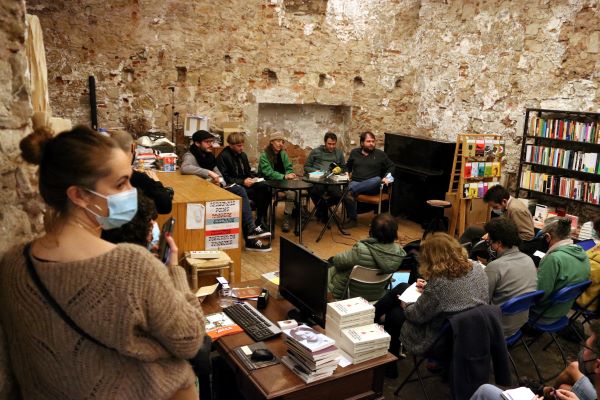Ten out of the 12 poorest neighborhoods in Barcelona do not have any book shops
Richest areas have 61% of establishments despite only one-third of population living there

Ten out of the 12 poorest neighborhoods in Barcelona do not have any bookstores, according to data from the city council analyzed by the Catalan News Agency (ACN). Only the Raval and the Besòs i Maresme districts have a book shop.
The richest areas of the city have 61% of the overall number of bookstores despite only 33% of the population living there. Barcelona has 73 districts, and in 25 of them, there are no bookstores at all, the vast majority of them (21) have lower average incomes compared to the city’s average per capita (€20,956, as published by the council in July 2021 with data from 2018).
The lack of bookstores "impoverishes" the area so local councils should "incentivize" opening new establishments, Maria Carme Ferrer, president of the Bookstores association, said to ACN.
Reasons behind the differences in the number of bookstores are mainly economic, as people with higher incomes have a higher "education" meaning they tend to be "better book store clientele," Ferrer explained. However, there are "always options for literature" in spite of income, she added.
Education and income are not the only factors determining the number of bookstores in the Catalan capital. There is the "historical tradition" of commercial activity and rent prices. The association says that in the Eixample neighborhood, for example, several stores had to close but now new ones are opening.
In Barcelona, there are 19.4 bookstores per 100,000 inhabitants, counting the 322 establishments registered by the city council.
Bookstores know about income classes
198 of these stores are located in 20 districts, the richest ones. They account for 61% of all bookstores in the Catalan capital with only 33% of the population (562,541 inhabitants).
On the other hand, 85% of the 49 neighborhoods that stand below the average income per capita level, also have lower than the average number of bookstores per inhabitant. The few districts that are over the stores average are Sants, Poble-sec, la Font de Guatlla (with one of their stores inside a private managed museum), Montbau (the store is inside a University of Barcelona campus), and el Raval, el Gòtic i Sant Pere, and Santa Caterina i la Ribera, all of these in Ciutat Vella, in the city center.
The Raval district has 51.3 stores per 100,000 inhabitants, and the only establishment in Besòs i el Maresme has a 3.8 per 100,000 inhabitants ratio.
Push libraries
The district of Nou Barris has the second-fewest bookstores in the whole city, at 5.2 per 100,000 inhabitants.
The reason behind this is because "cultural consumption is linked to the level of income," vice president of the Federation of neighborhood associations in Barcelona (FAVB) and district resident, Albert Recio, said to ACN.
"It is quite normal that an area with a lower income per capita has fewer cultural centers," he added.
In the past, the district used to have bookstores that sold books and newspapers, but with the digitalization and online sales, a lot of businesses had to close.
Despite the fewer establishments, public administrations and schools still have a key role in saving bookshops. Governments should make an "effort" to fill local libraries, so "people that want to read but do not have enough money can go to the library," Recio said.